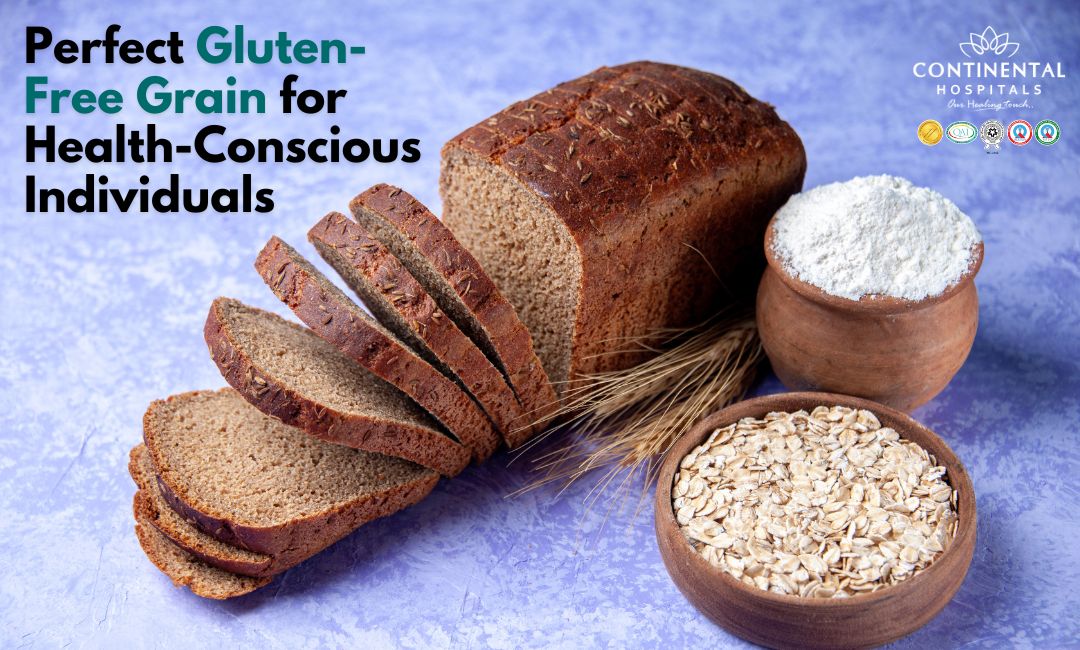As more people adopt gluten-free lifestyles, whether due to medical conditions like celiac disease or simply to improve overall health, the demand for healthy gluten-free grains has risen significantly. For those who are health-conscious, choosing the right grain to replace traditional wheat, barley, or rye can make a big difference in your diet..
So, what is the perfect gluten-free grain for health-conscious individuals? Let's dive into some of the top gluten-free grains that are not only nutritious but also versatile enough to incorporate into a wide range of meals.
What is Gluten-Free and Why Does It Matter?
Gluten is a protein found in wheat, barley, rye, and their derivatives. While gluten is safe for most people to eat, it can cause adverse reactions in those with celiac disease, a gluten intolerance, or a wheat allergy. For individuals with these conditions, consuming gluten can lead to a range of symptoms such as digestive issues, skin rashes, headaches, and fatigue. A gluten-free diet eliminates all foods that contain gluten, helping to prevent these reactions and promote overall health.
Luckily, there are many nutritious gluten-free grains available that can be easily added to your meals. These grains provide the necessary nutrients without the harmful effects of gluten.
Top Gluten-Free Grains for Health-Conscious Individuals
Quinoa: The Complete Protein Grain
Quinoa is often hailed as a "superfood" due to its high nutritional value. This gluten-free grain is a complete protein, which means it contains all nine essential amino acids that the body cannot produce on its own. This makes it an excellent choice for vegetarians and vegans looking for a plant-based protein source.
In addition to being rich in protein, quinoa is also packed with fiber, vitamins, and minerals like magnesium, potassium, and iron. It has a light, fluffy texture when cooked and can be used in a variety of dishes, from salads and soups to breakfast bowls and stir-fries. Quinoa is also naturally low in fat, making it an ideal choice for those looking to maintain a healthy weight.
Brown Rice: A Versatile and Nutritious Option
Brown rice is one of the most popular gluten-free grains and a staple in many kitchens. Unlike white rice, brown rice is a whole grain, which means it retains the outer bran layer, providing more fiber and nutrients. It’s a great source of complex carbohydrates, making it a filling and energizing food.
Brown rice is also rich in B vitamins, magnesium, and antioxidants, which can help support overall health. Whether you use it as a side dish, in soups, or as the base for stir-fries, brown rice is incredibly versatile and easy to incorporate into your meals. It’s also an excellent option for anyone looking to manage their blood sugar levels, as it has a lower glycemic index compared to white rice.
Amaranth: A Tiny Powerhouse
Amaranth is a tiny, gluten-free grain that packs a big nutritional punch. Like quinoa, amaranth is a complete protein, containing all the essential amino acids. It is also rich in fiber, iron, and magnesium, making it an excellent option for promoting healthy digestion and overall wellness.
Amaranth has a slightly nutty flavour and can be used in a variety of dishes. It’s perfect for making porridge, baking into gluten-free bread, or adding to soups and stews for extra texture and nutrition. This ancient grain has been used for thousands of years and continues to be a powerful health food today.
Millet: A Mild and Nutritious Grain
Millet is another great gluten-free option that is both mild in flavour and highly nutritious. It’s high in magnesium, phosphorus, and antioxidants, which can help reduce inflammation and support heart health. Millet is also a good source of fiber, which aids in digestion and helps maintain healthy cholesterol levels.
Millet cooks up quickly and can be used in a variety of ways. It can be served as a side dish, added to salads, or used as a base for savory dishes like pilafs or stir-fries. Its mild flavor makes it a versatile addition to any meal, and it can even be used to make gluten-free flour for baking.
Buckwheat: A Nutritious and Satisfying Choice
Despite its name, buckwheat is not related to wheat and is naturally gluten-free. It’s an excellent source of protein, fiber, and antioxidants, including rutin, which has been shown to support heart health by improving blood circulation and reducing inflammation.
Buckwheat is also rich in essential minerals like magnesium, manganese, and zinc, which support various bodily functions, from energy production to immune health. It can be used in a variety of forms, including buckwheat flour for baking, soba noodles for pasta dishes, or as a whole grain in salads or side dishes.
Teff: A Nutrient-Dense Ancient Grain
Teff is a tiny, gluten-free grain that has been a staple in Ethiopian cuisine for centuries. Despite its small size, teff is incredibly nutrient-dense, providing a wealth of vitamins, minerals, and fiber. It is an excellent source of protein and iron, making it a great choice for individuals who are vegetarian or need to boost their iron intake.
Teff has a mild, slightly nutty flavor and can be used in a variety of dishes, such as porridge, pancakes, or flatbreads. It’s also often used to make injera, a type of Ethiopian flatbread, which is naturally gluten-free.
Benefits of Choosing Gluten-Free Grains
Gluten-free grains provide a variety of health benefits that can support overall well-being. Here are some reasons to consider including these grains in your diet:
Rich in Nutrients: Many gluten-free grains are high in fiber, protein, vitamins, and minerals that are essential for good health.
Support Digestion: Fiber-rich gluten-free grains can help improve digestion and prevent constipation.
Heart Health: Many gluten-free grains are rich in antioxidants and heart-healthy nutrients that can reduce inflammation and support cardiovascular health.
Blood Sugar Control: Whole gluten-free grains have a lower glycemic index than refined grains, making them a better option for maintaining stable blood sugar levels.
Conclusion: Choose the Best Gluten-Free Grains for Your Health
For health-conscious individuals, incorporating gluten-free grains into your diet is a simple and effective way to boost your nutritional intake while avoiding gluten. Whether you choose quinoa, brown rice, amaranth, millet, buckwheat, or teff, you’ll be adding a variety of healthy, nutrient-dense grains that support digestion, heart health, and overall well-being.
If you experience discomfort after eating gluten or suspect you may have a gluten sensitivity, consult our best nutritionist at Continental Hospitals.
.webp)














